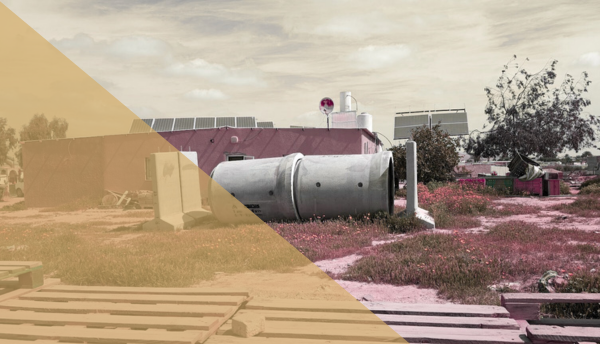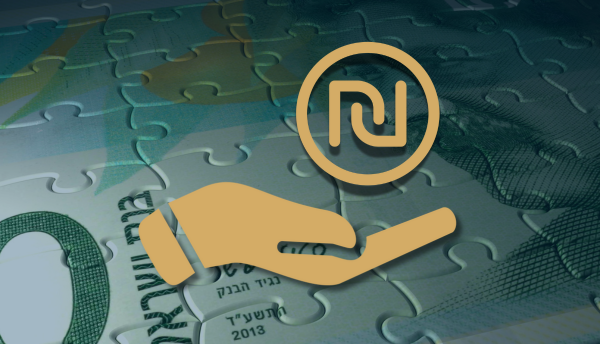Update on Emergency Response Needs in Arab Communities Following the War with Iran
The twelve-day war with Iran in June marked an unprecedented escalation in both the intensity and geographic spread of attacks across Israel with 28 fatalities. Heavy ballistic missiles and drones disrupted the country’s operational continuity, partially halting the economy and overwhelming existing emergency response mechanisms. Economic disruptions tend to impact Arab society directly, with swift income declines placing additional stress on fragile local economies and welfare frameworks. The Arab population, which had already been contending with wide infrastructure and capacity disparities due to the COVID-pandemic and the ongoing war, entered the conflict with compounded vulnerabilities.
On July 23, 2025, we hosted a conversation with Roeey Yessod, Chief of Staff, who has led the emergency response and preparedness efforts of the Authority for Economic Development of the Minorities in Arab communities since October 7th. Roeey shared insights into how the war with Iran impacted the ability to meet emergency needs on the ground and discussed ongoing efforts to strengthen long-term preparedness in Arab localities. The following is a summary of key questions and insights
How was the war with Iran different in terms of emergency response capacities in Arab Localities?
For Arab communities, the war brought a renewed sense of shared risk, particularly following the missile strike on Tamra, which resulted in four fatalities, significant damage and hundreds of residents being evacuated. The tragedy renewed awareness of pre-existing gaps, and introduced new and additional concerns such as lack of communication infrastructure, limited search and rescue capacities and unstable power supply in Arab towns.
In Arab towns, the absence of public shelters was evident during this conflict. Alerts occurred 20–25 times a day for nearly two weeks, with residents often required to remain in shelter for 10 to 30 minutes, or to stay close to one for prolonged periods. When the Home Front Command ordered all underground shelters to open, most Arab towns had none. Unlike Jewish localities, where schools and parking garages were converted into shelters, Arab communities lack underground infrastructure, reflecting ongoing disparities in emergency preparedness.
In terms of operational continuity, Arab municipalities end up operating from an uneven baseline. As an example, most Israeli schools transitioned to remote learning within days, while in Arab towns, many homes lacked internet infrastructure like fiber-optic lines needed to support it.
The war with Iran quickly exposed major shelter gaps. These issues can’t be solved overnight. How did you and your team prioritize emergency needs once the war began, especially around equipment, training, and information in Arabic?
When shelter infrastructure couldn’t be provided in time, the Authority for Economic Development of the Minorities in Arab communities in coordination with dedicated emergency information centers established by the National Council of Heads of Arab Local Authorities, Arab municipalities and civil society focused on what could be done.
- Emergency Equipment and Training: In case with Tamra, prior training and equipment made a noticeable difference. Volunteers were able to mobilize S&R mini-kits and smaller vehicles. Members of the public knew to avoid danger zones and assist with improvised rescue operations. Still, the lack of a developed volunteer network, weak infrastructure, and power outages hampered rescue efforts.
- Crisis Communication in Arabic: Emergency information in Arabic became a top priority. Three radio stations in Arabic delivered key communications. Harmony, a team of Arab professionals, launched Safe-Shelter, a bilingual digital platform developed within 72 hours to address the lack of information about shelters availability. Used by over 400,000 people, the platform allows users to instantly locate the nearest open shelter, report issues, and register private safe spaces for public use. It includes filters for accessibility (wheelchair access, lighting, stairs), and now developers are working on new features including offline mode, municipal dashboards, and AI-powered validation. In addition, WhatsApp-based “message waterfalls” were launched to cascade emergency instructions in real-time. This was also the first time, there were efforts to raise awareness on possible cyberattacks in Arabic.
- Supporting Public Resilience: Aid hotlines received a high volume of requests for food, medical assistance, and emotional support. Professionals emphasized the importance of reminding volunteers and municipal staff of their own resilience and skills. Communities were encouraged to view themselves as active participants in crisis management.
What does emergency preparedness look like today?
Israel remains in a state of emergency with the ongoing war, with the threat of future crises—including an anticipated earthquake in the north —ever-present. Emergency preparedness gaps in Arab communities need to be addressed not when the next escalation begins, but well before. Key long term priorities are:
- A Long-Term Strategy is needed to build shelters, expand training (e.g., level-2 search and rescue courses), and create local response hubs. Arab municipalities must be included in the national conversation on emergency preparedness as co-planners with the capacity to lead.
- Supervisory Structure and Government Accountability: The State Comptroller has repeatedly flagged the lack of a body to oversee emergency preparedness in Arab communities that can work across government, local municipalities, and Arab civil society professionals.
- Smarter Aid Models: Temporary emergency centers are no longer sufficient. What is needed are permanent, fully operational structures that work continuously between crises, built on local capacity, steady funding, and community trust.
- Addressing Shelter Alternatives: Alternatives to public shelters exist, such as reinforcing a room in private home, but they are expensive, and few are aware of this option. A proposal for state-backed loans to finance these renovations is being explored, but uncertainty remains about whether banks will offer them to Arab citizens. Without state commitment and philanthropic partnership, this remains out of reach for most households.
- New Plans with the Home Front Command: A new initiative will focus on securing kindergartens, clinics, and community centers in Arab towns. While this is an important step, it also highlights the challenge of how under-resourced and under-staffed Arab municipalities can manage this added workload without significant investment.
If you are interested in supporting provision of equipment and trainings to Arab local authorities so that search and rescue trainings can continue, please be in touch with Roeey Yessod at [email protected].
To learn more about the Safe Shelters App developed by Harmony, click here.
How Can We Help?
Do you need support integrating these resources and issues into your philanthropic, communal, or Israel education work? Reach out for consultations, connections to experts, program support, training, or to plan your next event or mission. If you’ve used our resources, tell us about your experience!


